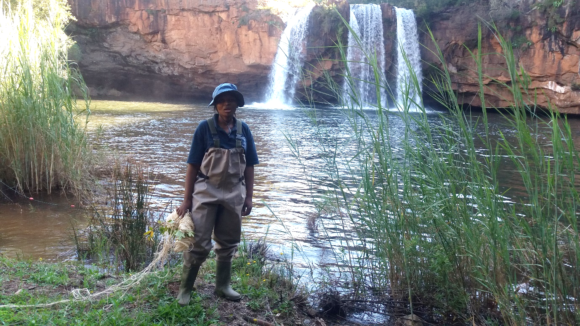13 May 2013 | By Dr James Roger
Plants that can self-fertilise are more likely to become invasive than those that cannot and among invasive plants, those that can self-fertilise have invaded larger areas. While this is intuitive, it has not yet been shown that this is a causal relationship, as many introduced plants receive visits from pollinators in the novel range. It has been hypothesised that self-fertilisation contributes to invasion by improving reproduction after introduction, especially when plants occur at low abundance. Initially, only a few individuals may be present and after dispersal, single individuals will be isolated from the original population. Clearly, the chances that invasion takes place are greater if plants in these small populations can reproduce successfully, but this is a challenge. Small isolated plant populations usually attract fewer pollinators and furthermore, pollinators that visit single isolated plants may not be carrying pollen from other plants of the same species. Self-fertilisation could increase invasiveness by mitigating these effects of small population size (Allee effects). However, there has not been any evidence that this mechanism is actually responsible for the correlation between selfing and invasiveness. This is addressed in a recent article in functional ecology by C·I·B PhD graduate Dr James Rodger, with his PhD supervisors Profs Mark van Kleunen and Steve Johnson. The research was done on Lilium formosanum, a Taiwanese lily species invasive in South Africa. Although the large hawk moth Agrius convolvuli pollinates the lilies in South Africa, the plants are also capable of self-fertilisation in the absence of pollinator visits.
Dr Rodger assessed the importance of self-fertilisation for fecundity in Lilium formosanum by emasculating flowers — removing their pollen-producing parts — in 66 invasive populations ranging from 1 to 6 000 individuals, over three years. This reduced seed production by two thirds, showing that L. formosanum depends on self-fertilisation for at least this fraction of its seed production, due to infrequent pollination by hawk moths and suggesting that self-fertilisation may make an important contribution to invasion in this species. Surprisingly, importance of self-pollination for seed production was not related to population size. Most previous studies over the same range of population size have detected declines in pollinator visitation, but these were on plants pollinated by bees, flies and birds. This suggests that there are differences between plants with different pollinators in the effect of population size on pollinator visitation, and that this could explain variation in the importance of self-pollination for invasion.
Because the first experiment on L. formosanum included few single isolated plants, James also set up experiments to investigate the importance of self-fertilisation specifically for plants in these circumstances. As single isolated plants may depend on selfing due to a lack of pollinator visitation or a lack of mates to supply pollen, the experiment used a rather novel procedure designed to disentangle these two effects. Lily plants were dug up from two ‘naturally occurring’ populations and isolated away from the population edge, or placed back inside the population. Isolated plants were placed in pairs, with an emasculated plant next to either a second emasculated plant or an intact plant. James found that isolation increased the plants’ dependence on self-pollination for seed production, but only in the absence of a pollen supply. This shows that moth pollinators visited isolated plants as frequently as non-isolated plants, but were less likely to be carrying pollen when they visited isolated plants. This conclusion was supported by observations of hawk moth scales and pollen deposited on emasculated flowers. There was no difference in presence of hawk moth scales on isolated plants and plants inside populations suggesting that they received similar numbers of pollinator visits. However, emasculated plants outside populations (and without intact plants next to them) received less pollen than emasculated plants inside populations.
This is the first study to show that self-fertilisation may facilitate invasion by increasing reproduction especially in isolated plants. It represents progress towards a functional understanding, in terms of plant and pollinator biology, of how plant abundance affects 1) insect pollination, 2) dependence on self-fertilisation for reproduction (in plants that can self-fertilise) and 3) the effects of self-fertilisation on biological invasion.

(Photo credit: Steve Johnson)
For more information, contact Dr James Roger at rodgerjg@gmail.com.



